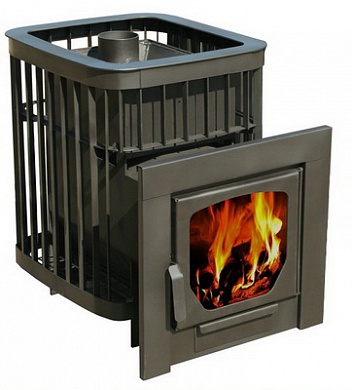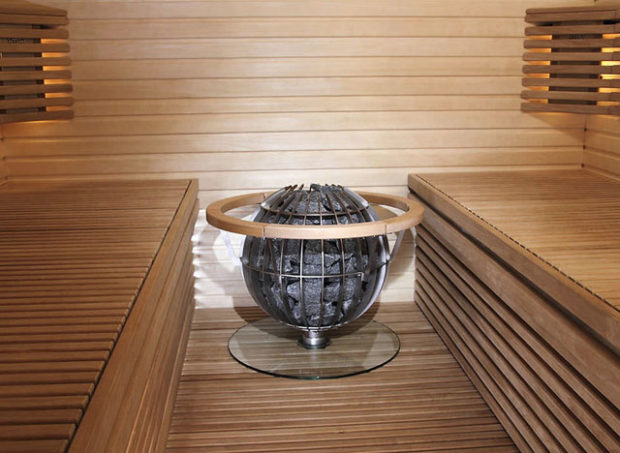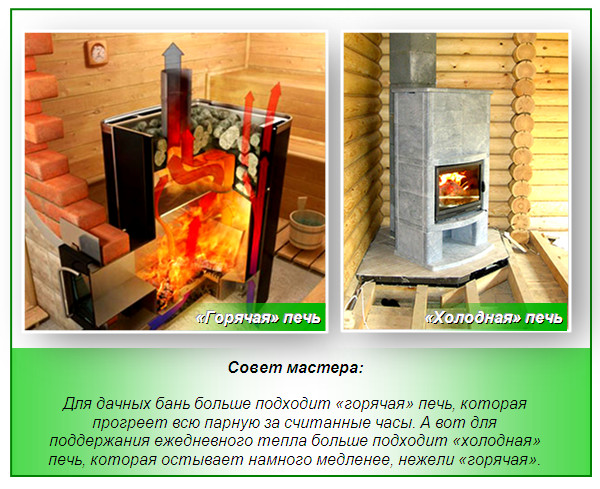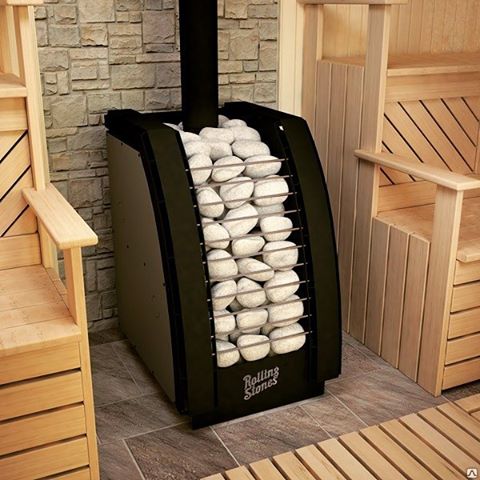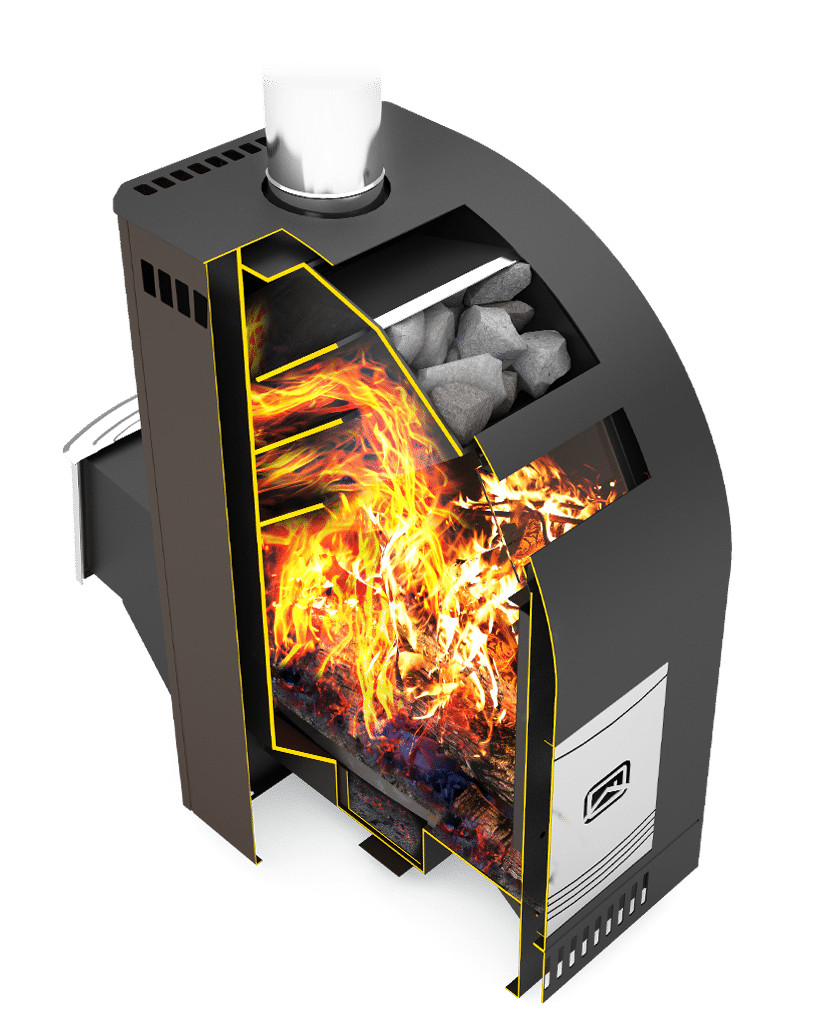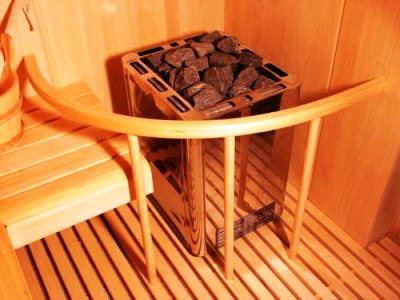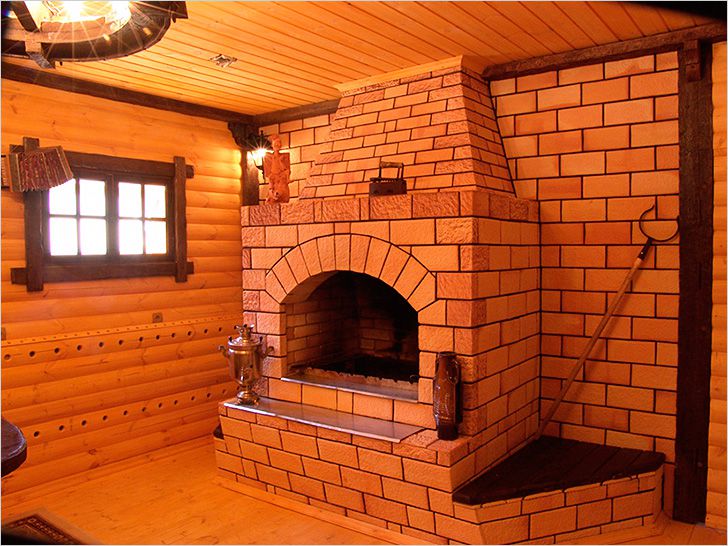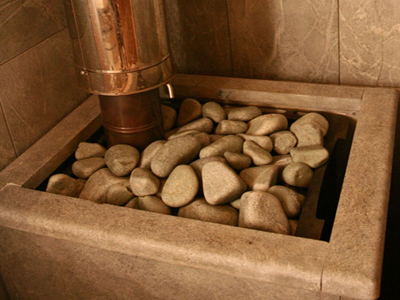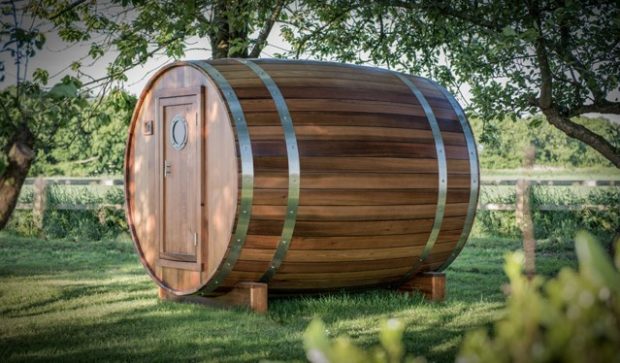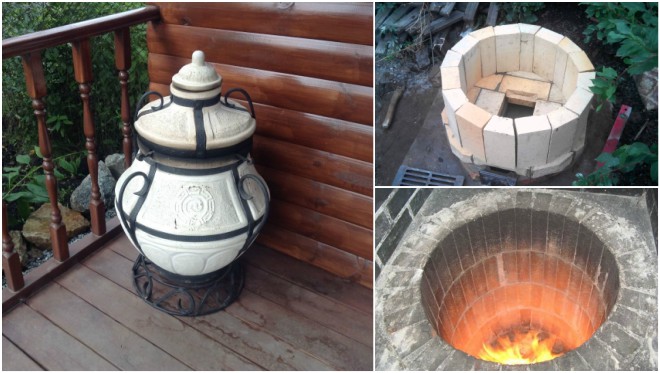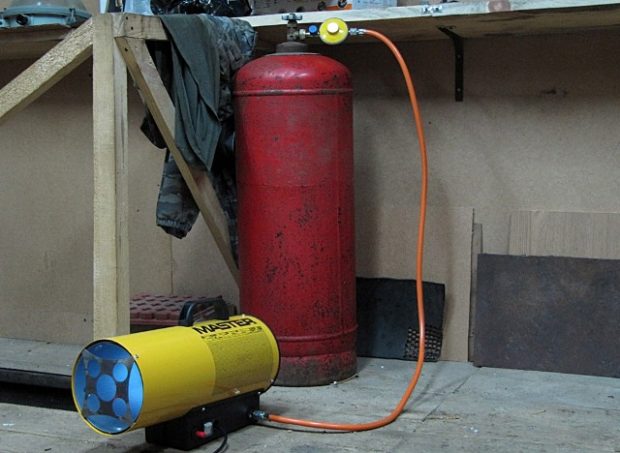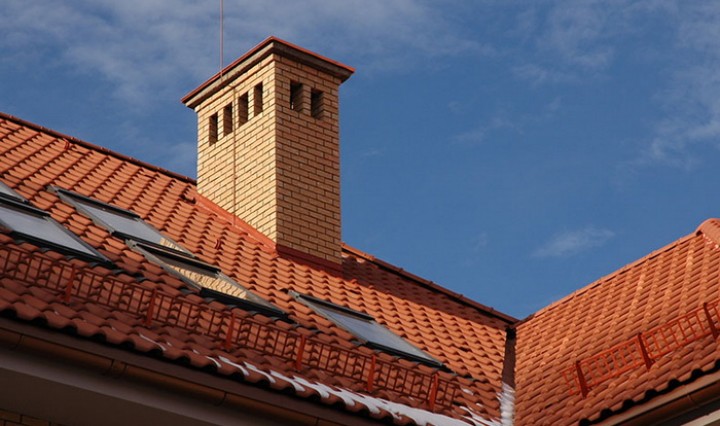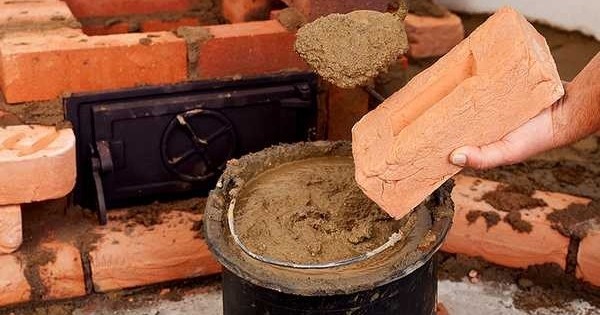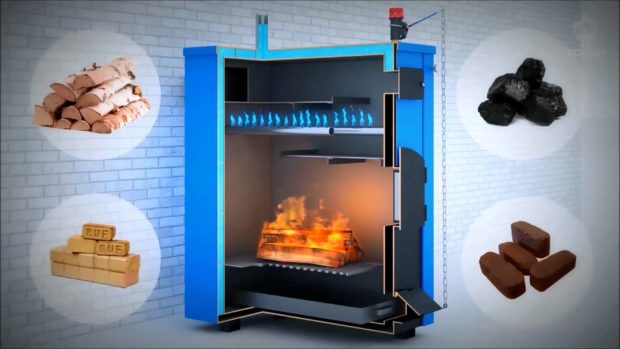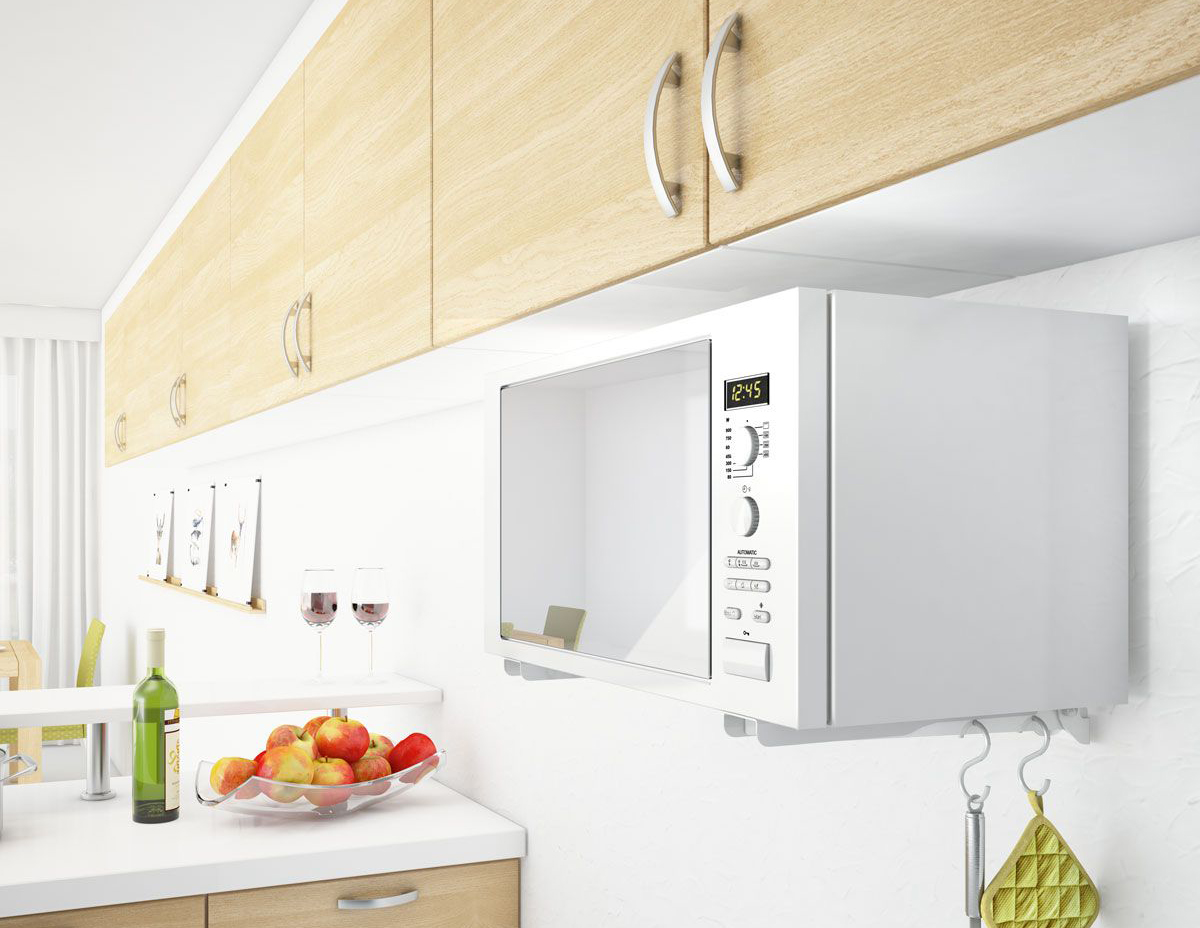10 tips for choosing a stove for a bath
Bath procedures are especially respected. It happened historically. Centuries pass, and the tradition of steaming in the bath does not disappear. Many owners of houses, cottages and summer cottages plan to build a Russian bath or sauna. One of the main issues is the choice of the furnace, because this is the very heart of the bath. You will have to take into account a lot of factors, determine the material of the furnace, power, type of fuel, additional functions. To choose the right stove for the bath, you have to study the issue comprehensively.
Going shopping unprepared is the main mistakemade by lovers of bath procedures. The second mistake - buying too cheap stoves from nameless manufacturers. Perhaps you should not explain that in this case you risk your own safety. It is better to take a product from a company that has established itself in the market. A vivid example is the domestic company Teplodar, which has been operating since 1997, has its own design bureau, and controls the quality of products at all stages of production. The company's online store offers a wide range of stoves for baths and saunas. There are dealers and service centers throughout the country.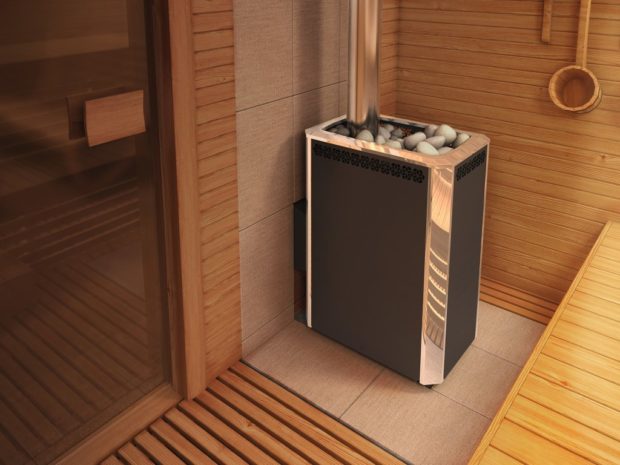
No. 1. Criteria for choosing a furnace for a bath
The issues of choosing a reliable and durable furnace must be dealt with before building a bath, at the design stage. This approach will allow you to pre-calculate the basic parameters of the equipment, organize the necessary foundation foundation, provide for installation options for the furnace. In this case, the main selection criteria are:
- type and design of the stove, the type of fuel used;
- power and performance, compliance of the specified parameters with the dimensions of the steam room and the bathhouse as a whole. Insufficient power leads to wear. Too high productivity means rapid heating of the room at an insufficient temperature of the stones, which leads to an imbalance in the adoption of wellness procedures;
- the principle of operation of the furnace. Classic models require ongoing maintenance. Long burning furnaces can produce heat for 4-6 hours without requiring your intervention;
- the presence in the kit of a water tank;
- the presence of convection;
- steam quality. Furnaces are equipped with open or closed type heaters. In the first case, light, dry steam is created in the steam room, in the second - wet.
When choosing a kit, it is advisable to read the instruction manual, pay attention to the safety of the model and its compliance with the requirements of current standards. Feedback from users who have already bought the selected model will also help with the choice.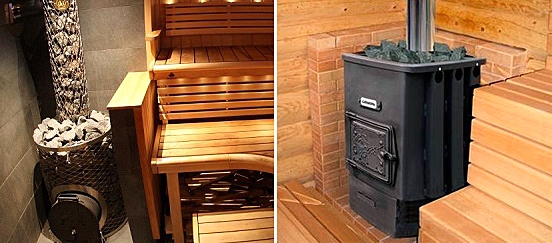
No. 2. The material of the furnace for the bath
If in ancient times only stoves were made brick, then today they have an alternative - steel and cast iron products. As you might have guessed, everyone has their own strengths and weaknesses, but there is also something in common. The higher quality material used, and the thicker the walls the oven received, the longer it will last.
Brick oven
Brick kilns today are becoming less and less popular. There are several reasons. Home - it is difficult to find a specialist who would correctly lay out such a stove. And in Russia, the ability to put a bath stove was considered an art, all the nuances were kept secret, and now it is almost impossible to find a worthy stove-maker.
Benefits:
- retains heat for a long time;
- warms up a large area;
- good fire safety;
- authenticity. If you want to bathe in a real Russian bath, then build a brick oven.
disadvantages:
- the complexity of the construction, sometimes it is impossible to find a specialist;
- heaviness. The average stove weighs about 1200 kg, which means that you need to cook a reliable one for it foundation;
- high cost due to the need to pay for a professional and create a foundation;
- dimension. A brick oven will take up a substantial part of the steam room;
- melts long and hard, but also keeps heat for a long time.
Experienced bath attendants also note that to get steam you need to splash water on the stove, and the smell of wet bricks is not very pleasant. The brick stove looks, of course, chic, oh you can cheat and lay a brick screen around the steel product.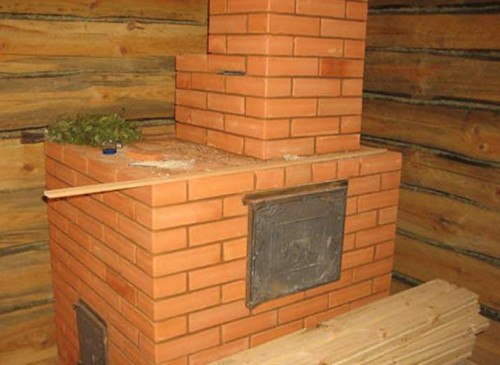
Steel furnaces
They are considered the best option. They make furnaces of their chrome steel, popularly called them “clean air”, since they do not burn oxygen. Furnaces are sold ready-made; they do not require special secret knowledge for successful installation.
Benefits:
- ease of installation;
- light weight, so a separate foundation is not required;
- compactness;
- ease of kindling;
- quick warming up of the room.
disadvantages:
- quick cooling of the room;
- To maintain the optimum temperature in the steam room, it will be necessary to constantly heat the furnace, since the metal has a low heat capacity;
- the fire will have to be maintained constantly;
- power for warming up a large area may not be enough;
- low level of fire safety.

Cast iron stoves
In popularity, cast-iron stoves are only slightly ahead of brick ones. Almost no one uses them either. There are a lot of reasons, but the advantages of such units are full, so think before choosing.
Benefits:
- high heat capacity and heat transfer;
- longevity up to 40 years;
- ease of kindling;
- security.
disadvantages:
- a lot of weight, so you have to equip the foundation;
- high price;
- cast iron is a brittle material that can crack or crack during transport or significant mechanical stresses.
It is worth mentioning another so-called potbelly stoves, primitive constructions with a pipe and a door. Of course, such equipment can be used, but nevertheless it is a relic of the past, which is inferior in functionality and safety to modern analogues.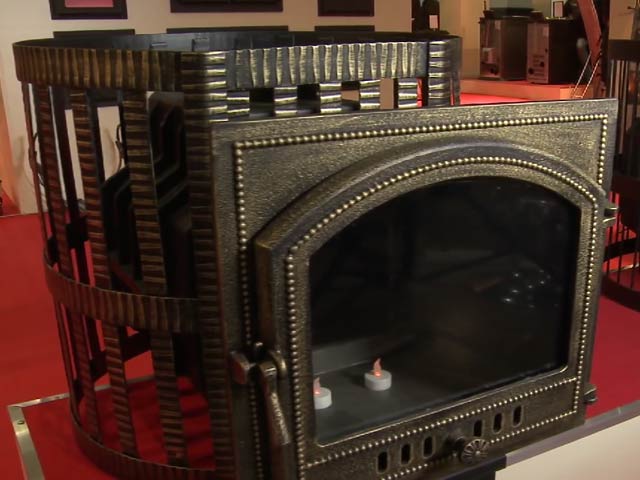
No. 3. Power of the furnace for a bath
The dimensions of the steam room play a decisive role in choosing the power of the product. In order for the temperature inside the steam room to be optimal for the body, the bath should not be overheated. With excessive power, the air will be hot and the stones cold. If you select a model that is insufficient for heating the steam room, you will have to heat the bath for a long time with the corresponding energy costs. At the same time, the life of the furnace will be significantly reduced. In general, the furnace should have optimal power and, preferably, a sufficient range of its regulation.
The methodology for calculating the required power is as follows:
- calculate the volume of the steam room. For example, for a room measuring 3 * 2 and a ceiling height of 2.3 m, the volume will be 13.8 m3;
- count heat loss on cold surfaces (windows, doors). We consider the area of these surfaces and multiply it by 1.2, since each such square meter absorbs the heat necessary for heating 1.2 m3 volume. Let's say that in the steam room there is a window 0.5 * 0.8 m (area 0.4 m2) and a door 2 * 0.9 m (area 1.8 m2) The total area of cold surfaces 2.2 m2. It is necessary to increase the estimated volume by 2.2 * 1.2 = 2.64 m3;
- summarize the obtained indicators. Goes 16.44 m3;
- we make an amendment for the bath material. If the bathhouse is log, without finishes (minimum thermal insulation), then multiply the result by 1.6. If the bath inside is sheathed clapboard, there is a layer of insulation (maximum thermal insulation), then you can take a coefficient of 0.6. Let's say our bath cannot boast of high-quality thermal insulation, then 16.44 * 1.6 = 18 m3that means an 18 kW oven is needed. Better to take with a margin of 20%.
Power range, i.e. the ratio of minimum and maximum power, ideally, 1:10. Such a furnace can operate at 3 kW and 29 kW. The power in the furnaces is regulated in several ways:
- You can adjust the amount of fuel supplied. Convenient for gas-fired stoves, but not wood-fired;
- limitation of the amount of incoming air. Option for wood-burning stoves;
- the release of excess heat into the environment. Literally - open the door and air the steam room.
If the manufacturer did not indicate the power of the furnace, then it can be roughly calculated by multiplying the volume of the furnace by 0.5.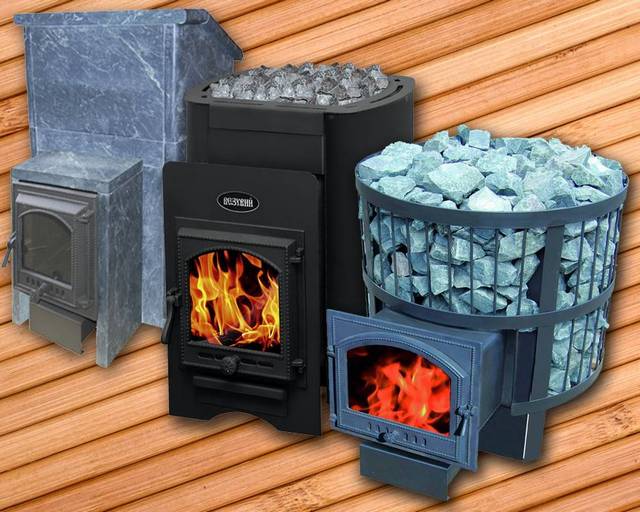
Number 4. What fuel does the stove run on?
Wood stoves
Wood-burning stoves are a classic option for a Russian bath. With the help of such models, a special atmosphere of comfort and coziness is created in the room. Fireboxes, wood burning, differ in practicality and durability, ease of use, and wood is an affordable and ubiquitous material. If the region has problems with gasification and electricity, then firewood is the only option.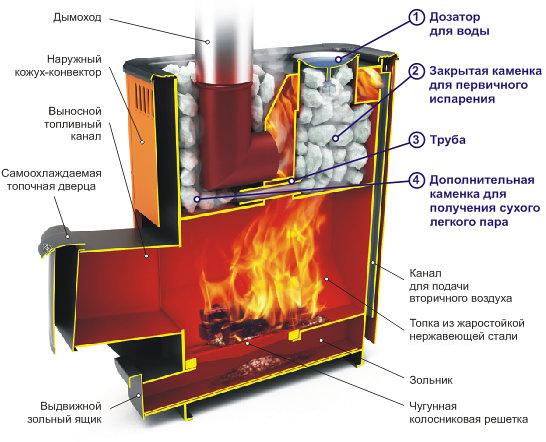
pros:
- no additional connection of communications is required, there is no dependence on the supplying companies;
- It’s quite simple to provide fuel for a wood-burning bathhouse. Possible purchase of material or its independent procurement;
- depending on preferences, you can purchase various types of firewood, differing in composition, productivity, efficiency of use;
- pleasant aroma of wood;
- wide range of furnaces.
Minuses:
- have to build a chimney and periodically clean it;
- when burning fuel, ash is formed, which must be regularly removed from the ash pan and chimney;
- using wood to heat the steam room is more difficult and longer than when using alternative fuels;
- will have to constantly throw firewood.
The result of the firebox of a wood-burning stove largely depends on the quality of the wood and even the skill of the stoker.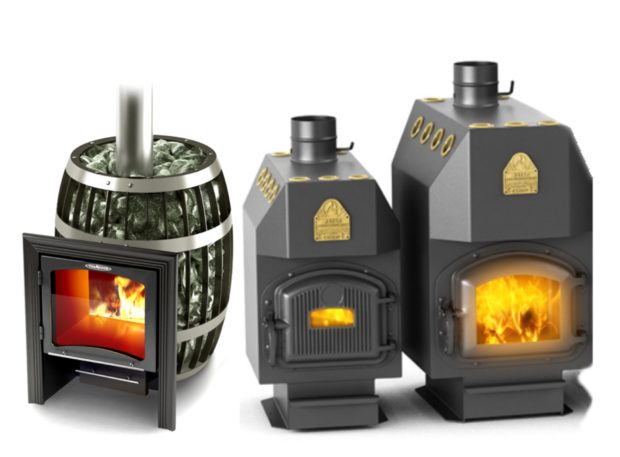
Gas stoves
Gas-fired sauna stoves have a large mass and corresponding dimensions, and their connection should be made with the assistance of qualified specialists. Installation of such a design saves the owner from constant control of the flame level and the lining of firewood. Main or balloon gas may be used.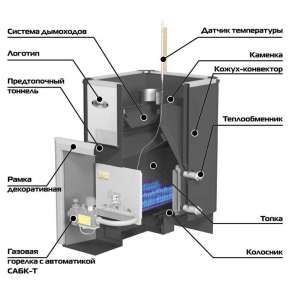
pros:
- compactness. Unlike wood stoves, gas stoves do without a firebox and an ash pan, so for small paired fit just right;
- no need to monitor fuel availability. True, in the case of bottled gas, one must remember to fill or change cylinders;
- the temperature inside the room can be controlled by changing the intensity of the fuel supply;
- no need to clean ash:
- operational heating of the room.
Minuses:
- need to connect to gas pipeline, and here without involving a specialist anywhere. If there is no gas in the region, you will have to use cylinders, which is not very convenient;
- the fire hazard of gas furnaces is higher than the alternative options.
When buying a gas furnace, carefully study its technical passport. You can only trust trusted and reputable manufacturers and shops - no private owners. Second-hand gas stoves are better not to take, the risk is high that they do not work exactly as they should.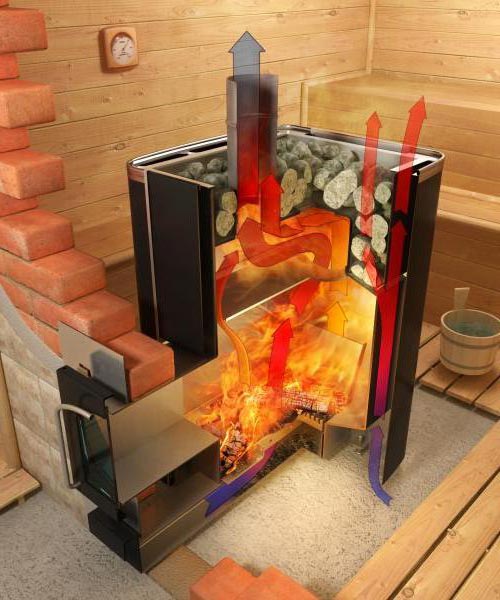
Electric ovens
Electric stoves do not have a chimney. The advantage of such models is the absence of carbon monoxide, which eliminates the possibility of poisoning by combustion products. The power of such equipment is selected based on the size of the room, but the energy consumption of electric furnaces is quite high. Today, electric stoves are considered the most popular, presented in a wide assortment.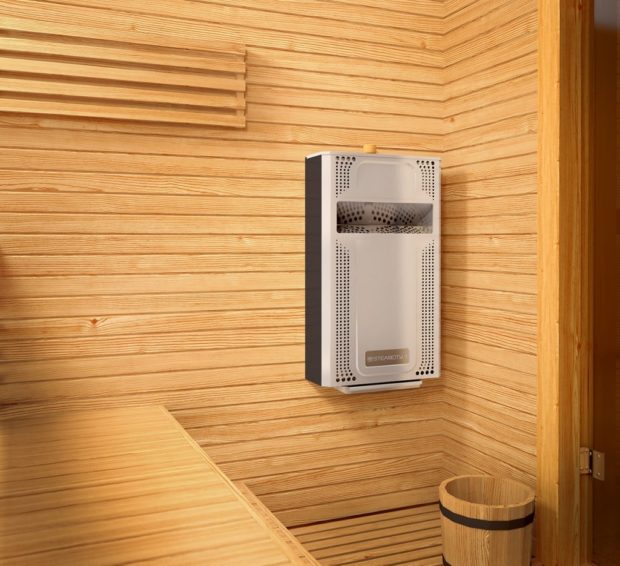
pros:
- compactness and light weight;
- fast and uniform heating;
- ease of management, flexible settings, functionality;
- lack of a chimney, so you don’t have to build and clean anything;
- low cost;
- does not require a gas connection;
- fire safety.
Minuses:
- electric ovens are not suitable for areas with frequent power outages. You can, of course, use a generator, but this is not very convenient;
- operating cost.

When connecting, make a separate grounding loop for the furnace.
There are also combined types of stoves, for example, gas and wood. Such a product will be overall, but almost universal.
No. 5. Firebox location
Depending on the location of the furnace, there are:
- with an extended firebox;
- with the classic.
Extended firebox get stoves that are mounted between the steam room and the dressing room. You can heat the furnace from the dressing room, which has a positive effect on fire safety and convenience. Anyone who throws firewood will in no way interfere with those who bathe, and there will be less dirt in the steam room, and the microclimate in it will be better. An ordinary firebox is located in the steam room itself.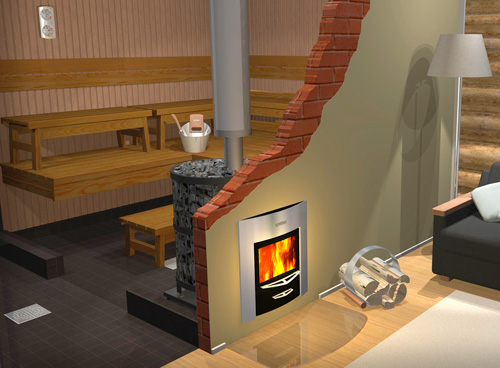
No. 6. Steam source
Bath furnaces are conventional and with a steam generator. What is the last for? And in order to provide the room with a sufficient amount of steam when the stove itself can not cope. The first sign of a real Russian bath is dry and light steam. Not all modern furnaces are capable of producing it in sufficient quantities.
Light steam is obtained at a steam room temperature of 850C. In this case, finely dispersed steam is obtained when water gets on stones heated to 5000C. With such heating, the air temperature will certainly rise, and to unbelievable limits, and in the end you can earn a burn. To prevent this from happening, we created steam generator furnaces. It warms up much faster than stones and saturates the steam room with the necessary steam, while the air temperature in it remains optimal.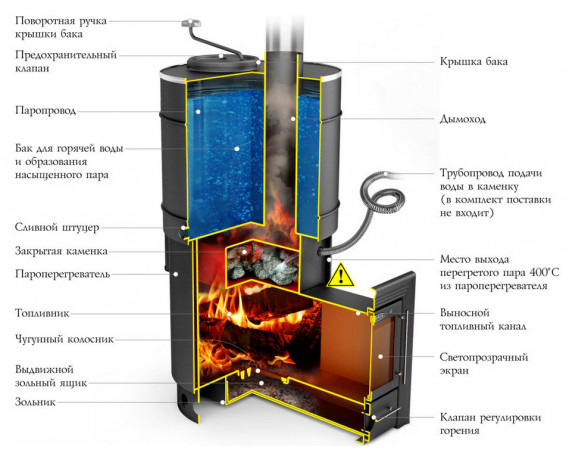
Number 7. Cold and hot stoves
Depending on how warm the walls are, the stoves can be:
- hot, the surface heats up to 1000C, so the steam room quickly becomes warm. Such stoves are great if the bath does not have constant heating. Minus - the inability to control the temperature in the steam room, up to the fact that the air can overheat;
- the walls cold ovens heat up to 45-500C, through special channels cold air is taken in, and it returns already in a heated state. The thermal regime is stable, humidity and temperature can be adjusted. The steam room will warm up for a long time, but if you are in no hurry, you will appreciate all the advantages of these stoves.

Number 8. Type of heater
Ovens can be:
- with open heater. Flue gases heat the walls of the stove and the stones. You can start to steam literally right away, but cooling is quick. These are safe stoves, soot is not collected on stones, however, more fuel is consumed here than in stoves with a closed heater, but you can be in the steam room as much as you like.

- with a closed heater. In such furnaces, stones are heated not directly from metal, but directly. To get the desired temperature, the furnace must be heated for several hours, but then it itself maintains heat for 10-12 hours. Such stoves were previously used in public baths, but now they are rarely used. The efficiency here is much higher, but it will not work to steam up until the stones are completely heated. Soot is collected on the stones, and safety is somewhat lower.

No. 9. Furnace technical equipment
pay attention to convection ovens. They provide optimal air exchange in the steam room. Due to the design of the heater and the protective casing, the temperature of air heating is quickly equalized, there is a constant movement of cold and hot air masses. In non-convection ovens, more time is required to create optimal conditions in the steam room.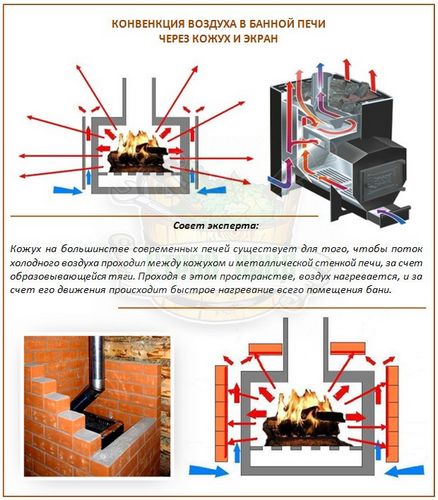
The oven can be equipped with capacity for heating water. Capacity can be built-in or remote.The first option is suitable for a steam room, designed for 2-3 people, provide them with enough hot water. Remote capacity is installed in baths with a high intensity of visits.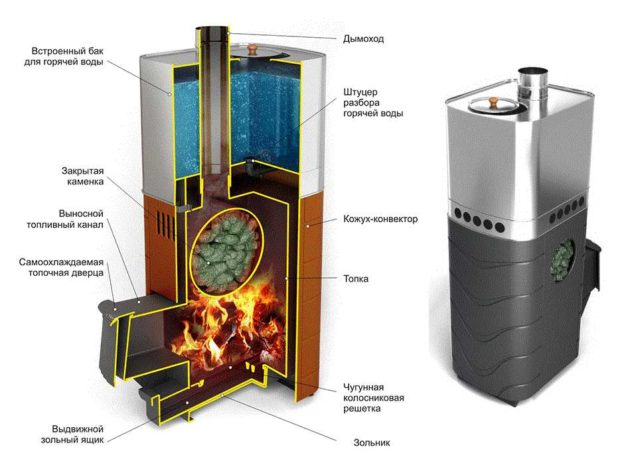
If there is a need to heat adjacent rooms (dressing room, shower room, locker room), then you can take a stove with heat exchanger. As a rule, the combined heating principle is used. The steam room is heated by convection, and the adjacent rooms receive heat through the arrival of heated coolant through radiators.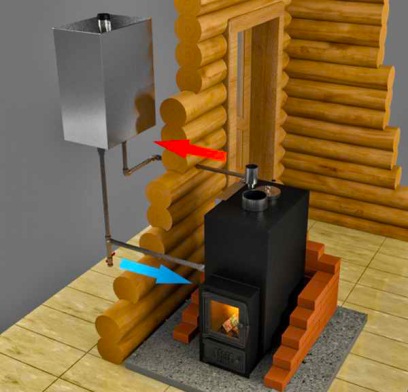
No. 10. Furnace shape
Last but not least, the form is considered more in terms of dimensions. It is worth noting that the classic rectangular stoves in priority. They are more stable and warm evenly, which can not be said about cylindrical models, the upper and lower parts of which are heated differently.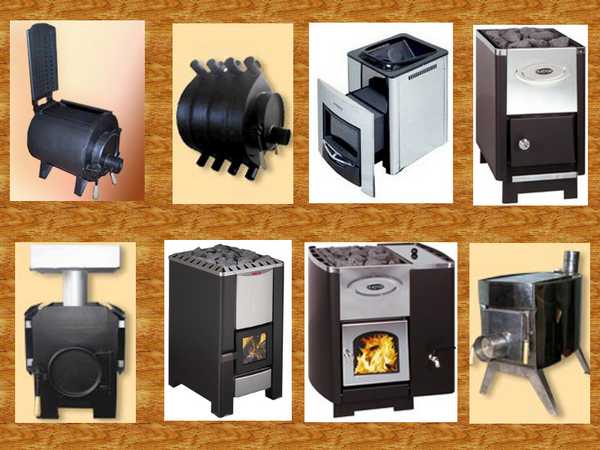
Finally
Hasty decisions made without a thorough study of the issue can negatively affect the choice of the furnace and the subsequent operation of the bath. When planning a purchase, one should not trust the advertising information and arguments of sellers, who are often poorly versed in their products. After studying all the details of the future bath, the possibilities of using various types of fuel, and consulting specialists, you can proceed with the selection of a furnace. A reliable and durable stove does not have to be the best or most expensive. The basic rule is the compliance of the model with operating conditions.
Among the manufacturers, one can advise the products of domestic companies Teplodar, Ermak, Termofor, Varvara, Feringer, as well as foreign Harvia and Kastor stoves.

